However, if the Settled Science that supports radiocarbon dating is really just one huge homogenised hodgepodge then acquiescent Earth Scientists are simply being misdirected and left to flounder in the dark.
This would go some way towards explaining why so many Earth Scientists are gainfully employed chasing their tails.Amongst the many issues associated with the Settled Science of radiocarbon dating there is the curious case of Catastrophic Cometary Carbon-14.
Thus, the mainstream gained the scientific kudos associated with Radiocarbon Dating whilst [simultaneously] wrestling control of the Settled Science away from Willard Libby by imposing a calibration curve that was approved by the mainstream.
Sadly, this hybrid, high jacked and half-baked Settled Science has now degenerated into a recursive [incestuous] feedback loop where dendrochronology calibrates Radiocarbon Dating which, in its turn, is used to calibrate dendrochronology.
See: Carbon 14 - Libby's Ring
Arguably, the burning up of a cometary debris train in the Earth's atmosphere would significantly enhance the level of atmospheric Carbon-14.
Carbon-14 is produced in the upper layers of the troposphere and the stratosphere by thermal neutrons absorbed by nitrogen atoms.Therefore, it's worthwhile taking a closer look at the radiocarbon dating of Dallas Abbott's six layers from the Tamarack Pond Core that are "difficult to explain except through impact processes".
When cosmic rays enter the atmosphere, they undergo various transformations, including the production of neutrons.
...
Occasional spikes may occur; for example, there is evidence for an unusually strong increase of the production rate in AD 774 - 775, caused by an extreme solar energetic particle event, strongest for the last ten millennia.
https://en.wikipedia.org/wiki/Carbon-14#Natural_production_in_the_atmosphere
Therefore, the regional ΔC14 and Be10 records only partially reflect solar activity because other "atmospheric processes" also produce radionuclides.
Lightning [just like cosmic rays] produces neutrons in the atmosphere which [in turn] produce carbon-14 when they are "absorbed by nitrogen".
The detonation of atomic weapons in the atmosphere is known to produce carbon-14.
Similarly, meteors will generate radionuclides in the atmosphere.
The explosive disintegration of the Chelyabinsk meteor in 2013 [for example] released "20-30 times more energy than was released from the atomic bomb detonated at Hiroshima."
See: de Vries Events
Atmospheric δ14C Record from Wellington
Carbon Dioxide Information Analysis Center
http://cdiac.ornl.gov/trends/co2/welling.html
The above-ground nuclear tests that occurred in several countries between 1955 and 1980 dramatically increased the amount of carbon-14 in the atmosphere and subsequently in the biosphere; after the tests ended, the atmospheric concentration of the isotope began to decrease.
https://en.wikipedia.org/wiki/Carbon-14#Natural_production_in_the_atmosphere
See: Dallas Abbott: Adventures in AvalonAn initial reality check using the radiocarbon dated Irish Oaks Chronology shows six of the Tamarack Pond Core layers are associated with spikes in the Δ14C values.
See: Dallas Abbott: Cape Verde Coral
See: A Carbon-14 Chronology
The following analysis of the Tamarack Pond Core focuses upon the two uppermost layers because if the radiocarbon dating is incorrect then Layer A [1006 ± 67 AD] might be associated with the Heinsohn Horizon [around] 914 CE whilst Layer B [925 ± 76 AD] might be associated with the Sand Layer [around] 760 CE.
See: Close Encounters of the Cometary Kind
This possibility is supported by the observation that Layer B contains the largest number of "interesting" grains in the Tamarack Pond Core.
Whilst the possibility that the radiocarbon dating is incorrect is highlighted by the noticeably diminished accumulation rates in the layers immediately adjacent to Layer B.
Establishing a Dated Stratigraphy for a Core from Black Rock Forest, Hudson Highlands, New York
Possible applications of distal impact ejecta as geologically instantaneous markers
Peregrine Gerard-Little, Dr. Dallas Abbott and Dr. Stephanie Pfirman
http://blackrockforest.org/files/blackrock/content/res_pub_gerardlittle_thesis_poster.ppt
A basic [mid-point] reality check of the radiocarbon dating using a linear trend for the Tamarack Pond Core suggests Layer A should be dated to 1066 AD i.e. the very same year Earth experienced a close encounter with Comet Halley.
The same basic reality check of the radiocarbon dating suggests Layer B should be dated to 776 AD and might be associated with the 760 AD Comet Halley Sand Layer.
See: Close Encounters of the Cometary Kind
Although this basic analysis of the Tamarack Pond Chronology is by no means definitive it does highlight some possibilities that should be remembered whilst further exploring the murky depth of radiocarbon dating...
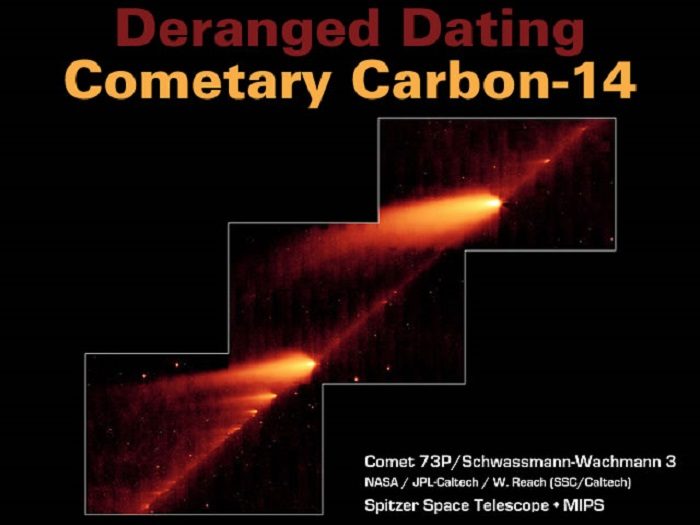
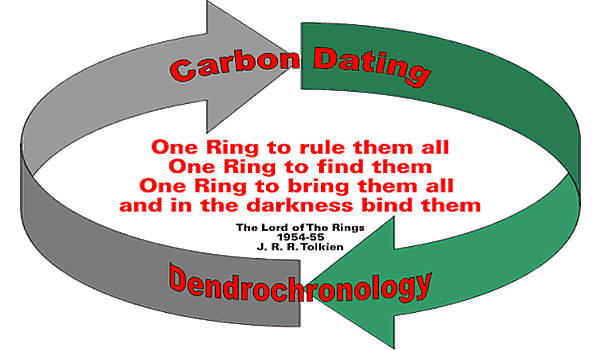
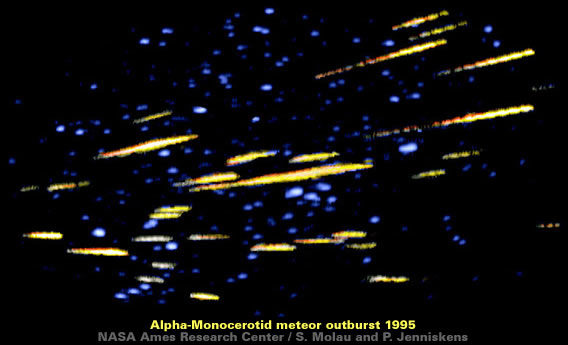
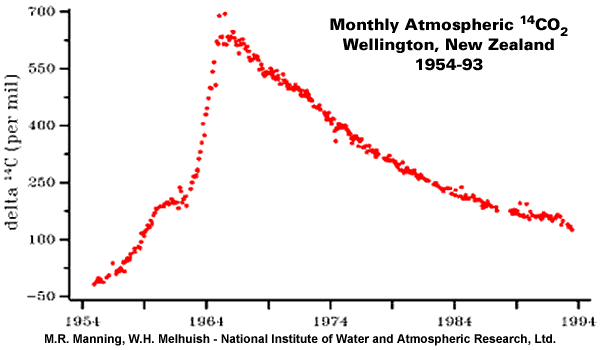
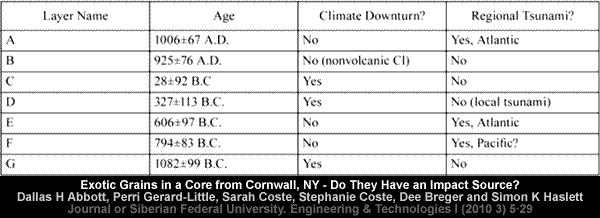
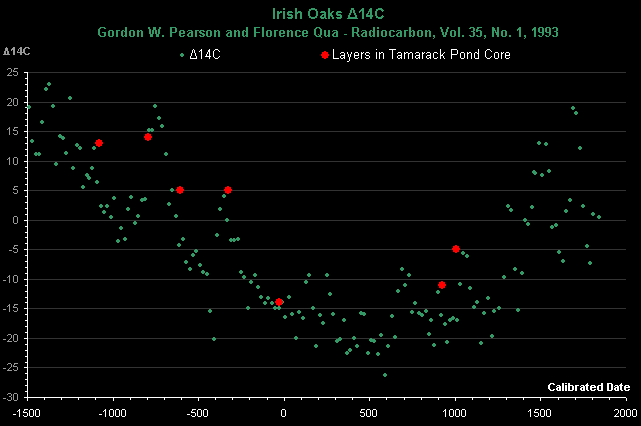
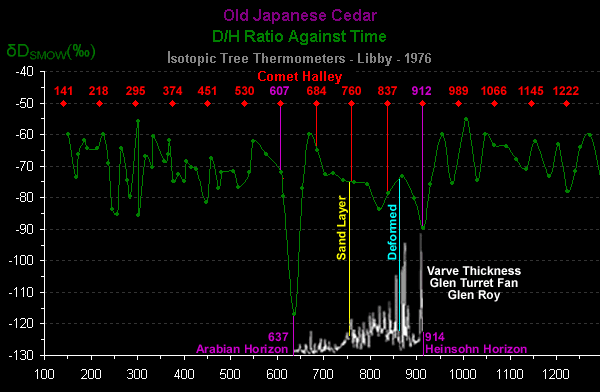
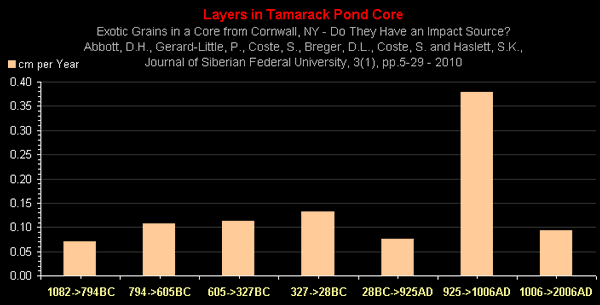
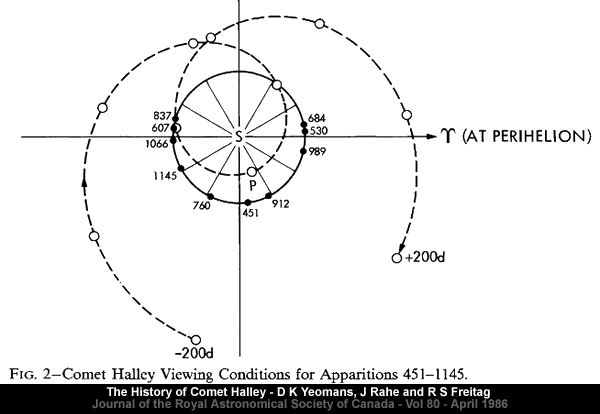



Reader Comments